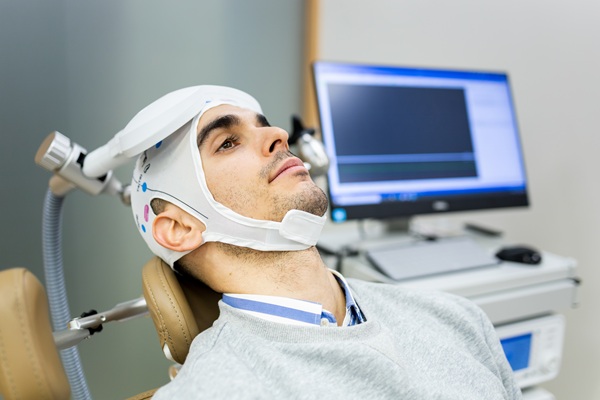What Happens During TMS Treatment?

Transcranial magnetic stimulation, or TMS treatment, is a non-invasive method of mood regulation. It uses magnetic energy to excite target neurotransmitters responsible for mental disorders like depression. Understanding what this treatment is about can help you prepare for it. Here are the details about what happens during a TMS treatment.
The consultation
Talking to the doctor before the TMS treatment can determine if it is suitable for the patient. A good candidate must not have a history of seizures. The patient must have good physical health. There should be no metal plates or devices in the patient’s head or body. If the patient is not suitable for this treatment, the doctor will suggest other treatments that could help.
The appointment
The patient does not need an overnight stay for a TMS treatment. The therapy is an outpatient one that can last between 20 and 50 minutes. The doctor will keep an eye on the patient, who will stay awake during the treatment. There will be no anesthesia or sedation during the TMS treatment.
Driving home will not be a problem for the patient right after the therapy. The patient can return to daily activities as well. There will be no oral medication or surgery. Common effects are mild discomfort around the target area and headaches. These will fade as the sessions go on. Over-the-counter pain relievers can help manage the pain.
Measuring the right angles and distances of the placement will come first. The doctor will store the information in the TMS machine. The doctor will place the magnetic coils near the front part of the scalp. This will target the prefrontal cortex, which is often unexcited in depressive patients.
For the next appointments
The patient will not go through these measurements again. The first TMS treatment stored the patient’s data in the machine already. The machine will calibrate using the information that it has. The sessions will still last for 20 to 50 minutes. An electric current will pass through the patient’s neurons. This will produce a chemical reaction that can boost the patient’s mood.
There will be many sessions after the first one. The next ones will help the patient achieve long-term relief. Research shows that a patient can maximize the benefits by having 30 TMS treatment sessions. The patient will have five sessions each week for four to six weeks.
Experiencing the changes
The length of the recovery will depend on how the patient heals. Some patients who receive repetitive TMS treatment sessions can see mild improvements after two weeks. Others may notice the changes until the fourth or fifth week of the sessions. Taking longer to experience the changes does not mean that it is ineffective. In general, TMS treatment can provide lasting relief.
The response to the treatment may change because of factors such as personality type or brain activity. Age and personality type can also influence the results of the TMS treatment. Patients may report quick results from the first sessions. But the most important result is achieving lasting relief from the patient’s mood disorder.
TMS treatment can provide the results that you need and want
Traditional treatments for mood disorders are not for everyone. Some patients improve, while others do not. For treatment-resistant mood disorders like depression, TMS treatment sessions can help provide relief. Working with your doctor can help maintain your positive results.
Get more information about Future Psych Solutions in Columbia at https://futurepsychsolutions.com.
Check out what others are saying about our services on Yelp: TMS Treatment in Columbia, SC.
Related Posts
Treatment-resistant depression can leave patients feeling stuck, even after exploring different medications and approaches to therapy. The good news is that TMS therapy, or transcranial magnetic stimulation, offers a new way forward. This innovative and noninvasive psychiatric treatment aims to restore healthy communication between brain regions responsible for mood, emotion, and focus, providing a path…
Ketamine therapy is an effective treatment method for treatment-resistant mental conditions, such as depression, anxiety disorders, and post-traumatic stress disorder (PTSD). However, common misconceptions may prevent individuals from choosing this treatment and obtaining the relief they need. Our team is here to dispel the three most common myths surrounding ketamine therapy so you can make an…
Adult psychiatry can help bring relief to those struggling with their mental health. Psychiatrists complete specialized training in treating various mental disorders, from clinical depression to anxiety, and more. Whether you or a loved one has been diagnosed with a mental disorder or does not know what the issue is, psychiatric treatment may help. Below…
IV nutrition offers a direct way to deliver vitamins, minerals, and amino acids that support brain function and emotional balance. By bypassing the digestive tract, IV nutrition enables predictable absorption and therapeutic dosing. Many patients pursue it as an adjunct to psychiatric care, seeking steadier energy, improved focus, and fewer nutrient gaps. With medical overnight,…


